Discover 15 hidden attractions, cool sights, and unusual things to do in Praia (Cape Verde). Don't miss out on these must-see attractions: Dona Maria Pia Lighthouse, Praça Alexandre Albuquerque, and Museu Etnográfico da Praia. Also, be sure to include Quebra Canela in your itinerary.
Below, you can find the list of the most amazing places you should visit in Praia (Praia).
Table of Contents
Dona Maria Pia Lighthouse
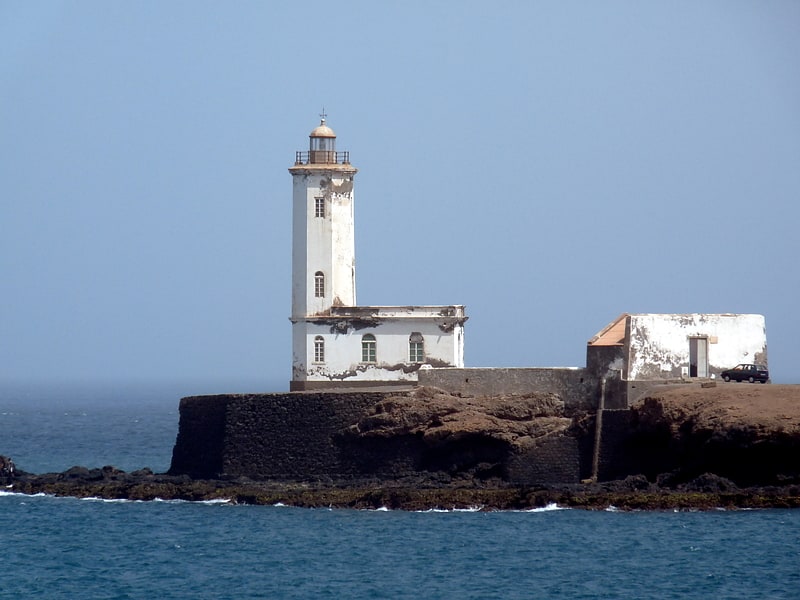
Also known as: Farol de D. Maria Pia
Historical landmark in Cape Verde. Farol de Dona Maria Pia is a lighthouse at the southernmost point of the island of Santiago, Cape Verde. It stands on the headland Ponta Temerosa, at the entrance of Praia Harbour, 2 km south of the city centre of Praia. The lighthouse was built in 1881 and was named after Maria Pia of Savoy, queen of Portugal at the time. The octagonal tower is 21 m high and its focal plane is 25 m above mean sea level. It is painted white. The lighthouse is used for navigational purposes.[1]
Praça Alexandre Albuquerque

Tour agency in Praia, Cape Verde. Praça Alexandre Albuquerque is the main square of the capital city of Praia, Cape Verde. It is located in the southwestern part of the Plateau, the historical city centre of Praia. Formerly known as Praça do Pelourinho, it received its current name in 1876 in honour of the Portuguese colonial governor Caetano Alexandre de Almeida e Albuquerque. It is lined with several historical public buildings and townhouses, many of which date from the 19th century. The square is surrounded by Rua Patrice Lumumba, Rua Serpa Pinto and Avenida Amílcar Cabral.
The centre of the square is a public park with monuments to Alexandre Albuquerque (a bronze bust from 1926) and Serpa Pinto (a bronze bust from 1927). Notable buildings around the square:
- Pro-Cathedral of Our Lady of Grace, built between 1894 and 1902
- City hall (Câmara Municipal or Paços do Concelho) of Praia, built in 1858
- Palace of Culture "Ildo Lobo"
- Palace of Justice, built in 1961
- the banks Banco Comercial do Atlântico and Banco Interatlântico
Museu Etnográfico da Praia
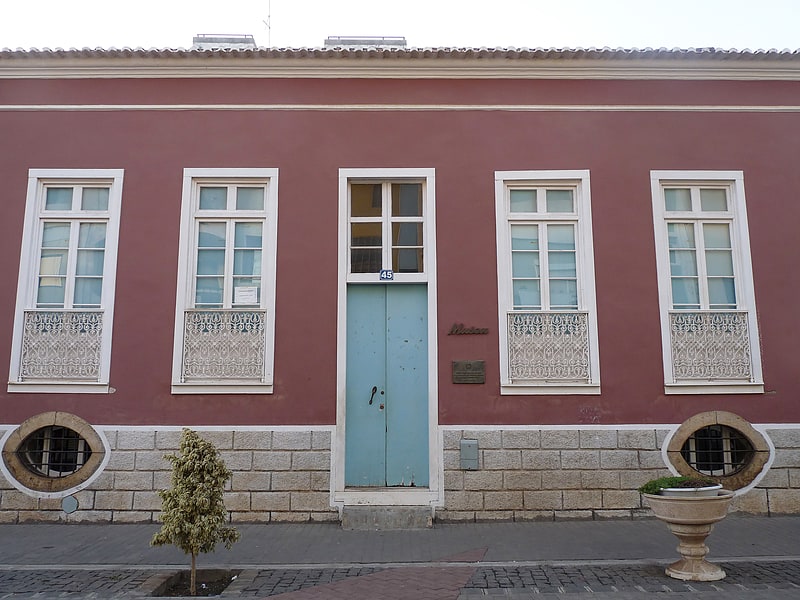
Museum in Praia, Cape Verde. Museu Etnográfico da Praia is an ethnographic museum in the Cape Verdean capital of Praia on the island of Santiago. It is located at 45 Rua 5 de Julho, in the historic part of the city, the Plateau. The museum was opened in November 1997 and is located in a 19th century building. The museum contains a selection of objects that represent the traditional uses and customs of the Cape Verdean people.[3]
Quebra Canela
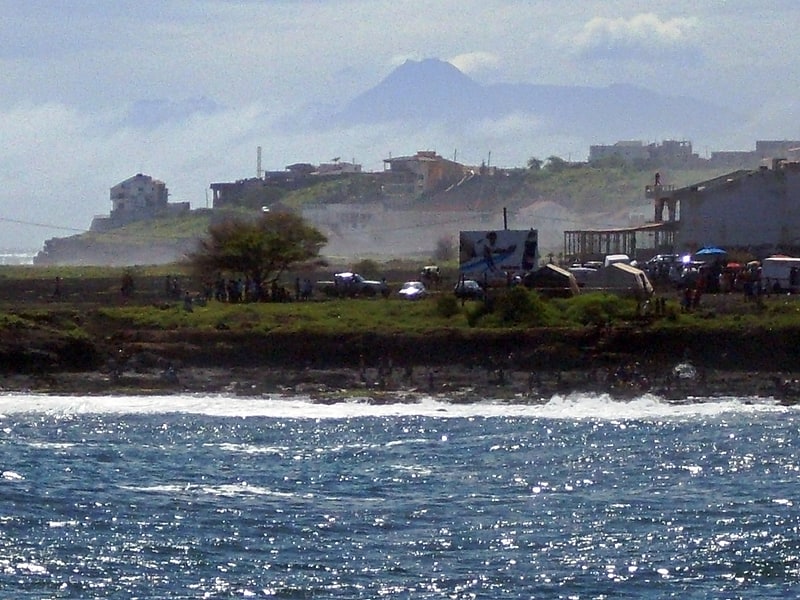
Beach in Praia, Cape Verde. Quebra Canela is a subdivision of the city of Praia in the island of Santiago, Cape Verde. Its population was 19 at the 2010 census. It is situated southwest of the city centre. Adjacent neighbourhoods are Palmarejo to the west, Achada Santo António to the north and Prainha to the east. It has a popular beach.[4]
Pro-Cathedral of Our Lady of Grace
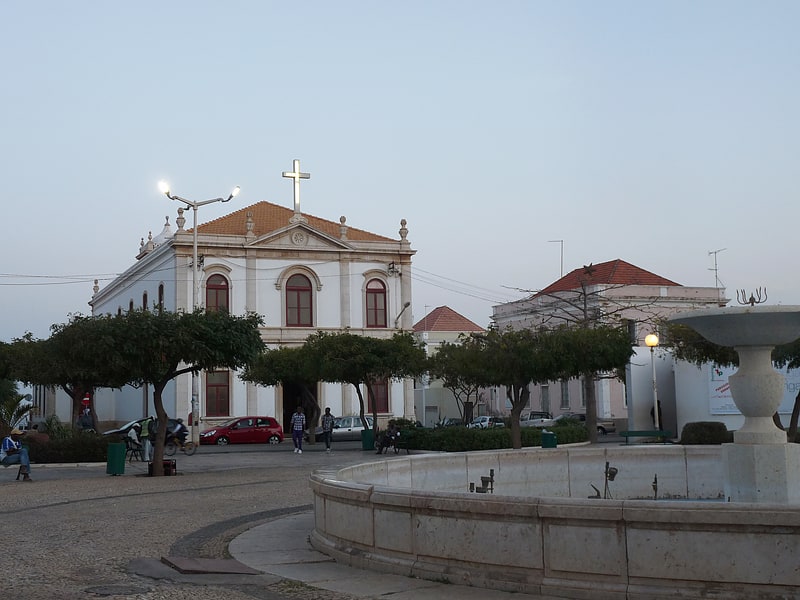
Church in Praia, Cape Verde. The Pro-Cathedral of Our Lady of Grace is a catholic church on the east side of Praça Alexandre Albuquerque, in the city centre of Praia, on the island of Santiago, Cape Verde. The church was built between 1894 and 1902. It is the seat of the Roman Catholic Diocese of Santiago de Cabo Verde, which was created in 1533. It is under the pastoral responsibility of Arlindo Gomes Furtado Cardinal.
The church was built in neoclassical style. Its main façade and entrance are at the Praça Alexandre Albuquerque; the bell tower is at the rear of the church, on Avenida Andrade Corvo.[5]
Monumento de Diogo Gomes

Monument in Praia, Cape Verde. The Monumento de Diogo Gomes is a statue at the south end of the Plateau, the historic centre of Praia, on the island of Santiago, Cape Verde. It represents Diogo Gomes, the Portuguese navigator who was one of the discoverers of the island of Santiago in 1460. The cast iron statue was created by the Portuguese sculptor Joaquim Correia in 1956. The statue itself is 3.3 m tall, and stands on a 1.85 m high pedestal. It stands close to the Presidential Palace, and overlooks the beach of Gamboa.[6]
Presidential Palace
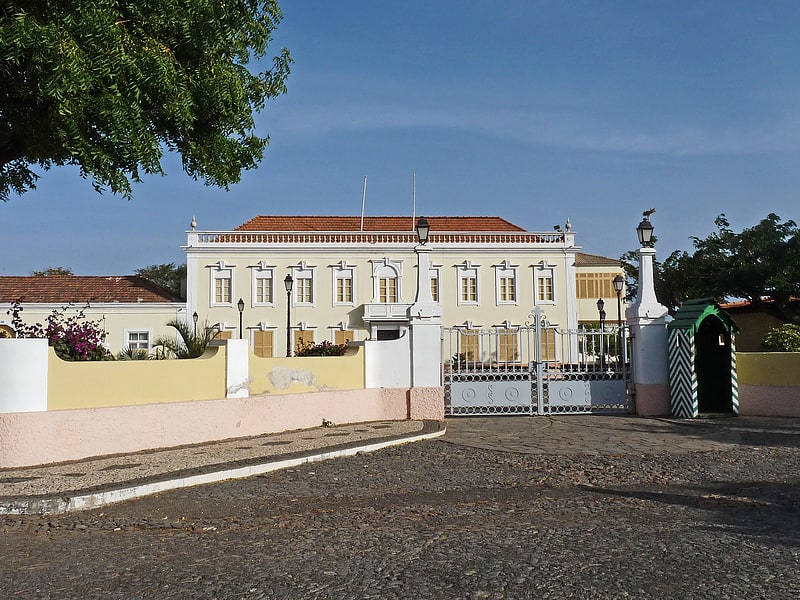
Also known as: Palácio Presidencial de Cabo Verde
Building in Praia, Cape Verde. The Palácio da Presidência da República is a public building in the city centre of Praia, the capital of Cape Verde. It is situated on Rua Serpa Pinto, at the south end of Plateau, the historic district of Praia. It was constructed around 1894 in neoclassical style as a residence of the Portuguese governor of Cape Verde. After Cape Verde gained independence in 1975, it became the presidential palace.[7]
Address: Praia, Rua Serpa Pinto
Ilhéu de Santa Maria
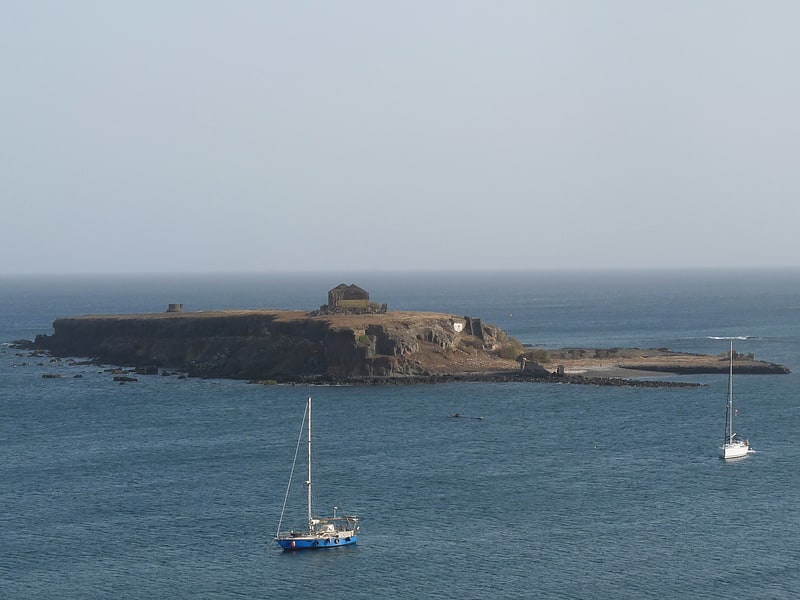
Islet in Cape Verde. Ilhéu de Santa Maria is a small uninhabited islet of the Sotavento archipelago in Cape Verde located off the shore of the island Santiago. Like all Cape Verdean islands, the islet is of volcanic origin. The islet has an area of roughly 0.05 square kilometres and is 420 metres long and 130 metres wide. It is situated at the entrance of Praia Harbour, in front of Praia da Gamboa, near the city centre of Praia.
In the 1850s, a customs house and warehouses were built on the islet. The buildings have been used for quarantine as well, but this was moved to the new Lazareto on Ponta Temerosa in the 1870s.
In 2015, the Cape Verdean government and the Chinese-based Legend Development Company agreed on construction of a hotel resort and casino on the islet. As of May 2018, the bridge from the islet to the mainland has been completed, and construction of the hotel and casino are due to start in August 2018.[8]
Arquivo Histórico Nacional

The Arquivo Nacional de Cabo Verde is the national archive of Cape Verde. It is located in the capital city of Praia, on Avenida Combatentes da Liberdade da Patria, in the subdivision of Chã de Areia. It is housed in the former customs building, that was built in 1878.
The Arquivo Histórico Nacional was created on December 31, 1988 under the decree number 128/88, with the purpose of preserving, organizing and disseminating the national archival heritage. On December 9, 2012, the government of Cape Verde approved a new structure of the Ministry of Culture, and the Arquivo Histórico Nacional became the "Arquivo Nacional de Cabo Verde". It contains about 6,000 meters of books of records and separate documents produced by the Central Administration, Municipality Councils, Churches, Registries and Notaries and by the Courts.[9]
Prainha
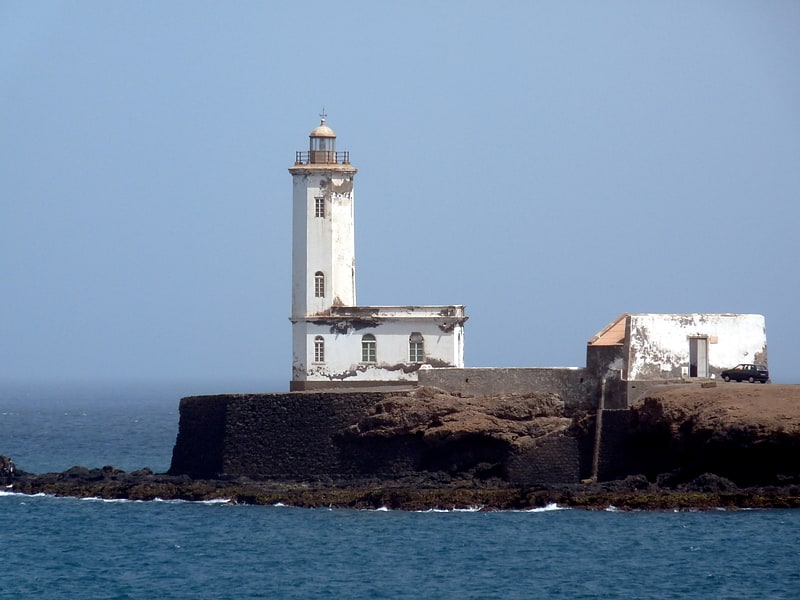
Prainha is a subdivision of the city of Praia in the island of Santiago, Cape Verde. Its population was 309 at the 2010 census. It is situated on the coast, south of the city centre. Adjacent neighbourhoods are Achada Santo António to the north and Quebra Canela to the west. Several foreign embassies are located in Prainha.
The most notable landmark is Dona Maria Pia Lighthouse, located on Ponta Temerosa, the island's southernmost point.[10]
National Library of Cape Verde
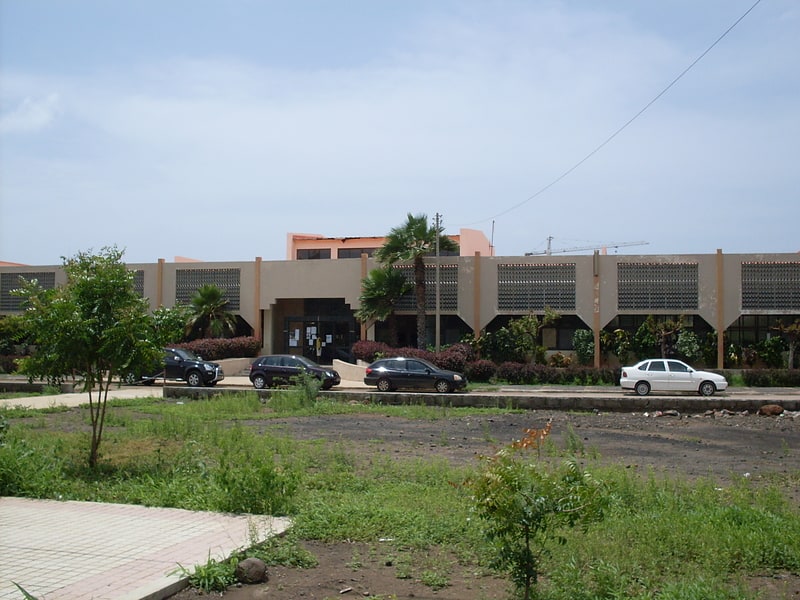
Also known as: Biblioteca Nacional de Cabo Verde
National library in Praia, Cape Verde. The National Library of Cape Verde is located in Praia, Cape Verde. The library was established in 1999. The library maintains the National Bibliography, contains the country's historical archives and the theses and dissertation bank and is a legal deposit. It also serves as the public library of Praia, the country's capital.[11]
Rua 5 de Julho
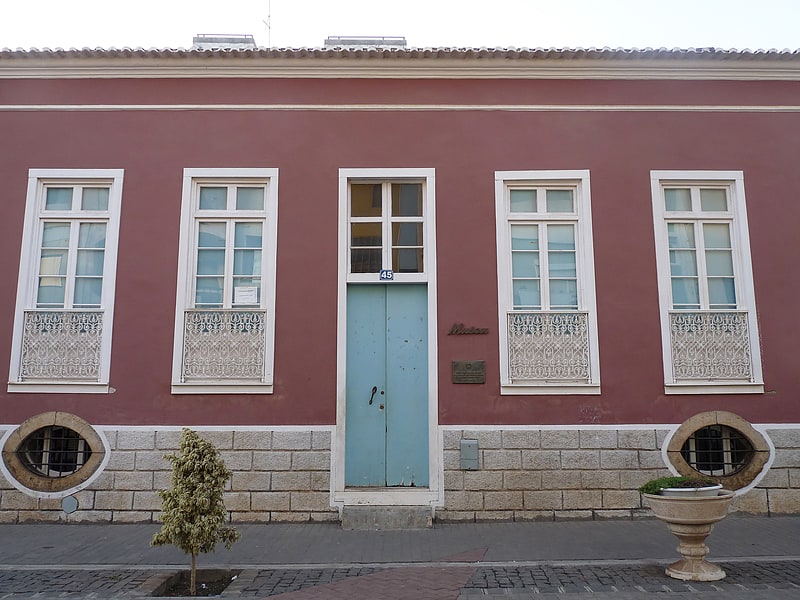
Street in Praia, Cape Verde. Rua 5 de Julho is a street in the Plateau, the historic centre of Praia, Santiago island, Cape Verde. Formerly named Rua D. Luís after King Luís I of Portugal, it was renamed after 5 July, the independence day of Cape Verde. It runs south to north, parallel to Avenida Amílcar Cabral and Rua Serpa Pinto. Praça Alexandre Albuquerque is at its southern end. It has been pedestrianised in the early 21st century.
Notable buildings along the street:
- the Municipal Market
- Museu Etnográfico da Praia
Rua Serpa Pinto

Street in Praia, Cape Verde. There is also Rua Serpa Pinto in the neighbourhood of Mártires in Lisbon, Portugal
Rua Serpa Pinto (formerly Rua do Lencastre) is a street in the Plateau, the historic centre of Praia, Santiago island, Cape Verde. It is one of the main arteries of the city centre. Formerly named Rua do Lencastre after early 19th century Portuguese governor António Lencastre, it was renamed in honour of Alexandre de Serpa Pinto, Portuguese colonial administrator. It runs south to north in the central part of the Plateau, parallel to Rua 5 de Julho and Avenida Andrade Corvo. It forms the east side of Praça Alexandre Albuquerque and the west side of Praça Luís de Camões.
Notable buildings along the street:
- Presidential Palace (Palácio Presidencial)
- Pro-Cathedral of Our Lady of Grace, at Praça Alexandre Albuquerque
- Escola Grande, at Praça Luís de Camões
- the Nazarene church, built in 1947
- Liceu Domingos Ramos, at Praça Domingos Ramos
Quartel Jaime Mota
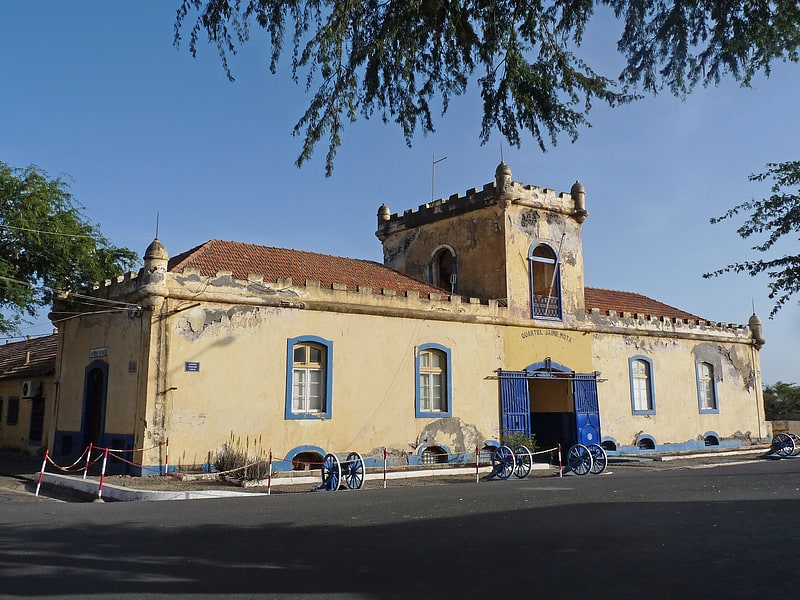
Museum in Praia, Cape Verde. Quartel Jaime Mota is a historical building in the historic city centre of Praia, Cape Verde. It is situated at the southern end of Avenida Andrade Corvo, near the Presidential Palace of Cape Verde. It was built between 1823 and 1826 as a military barracks. The present structure in Neo-Manueline style dates from 1872, and was further expanded and modified in the late 19th and early 20th century. After independence, it was named after Jaime Mota, a Cape Verdean militant of PAIGC who was killed in Portuguese Guinea.
In 2012 it was decided that the building will be restored and house both a military museum and services of the Ministry of Defence. The Angolan Minister of Defence has agreed to cooperate in the rehabilitation works.[14]
Platô
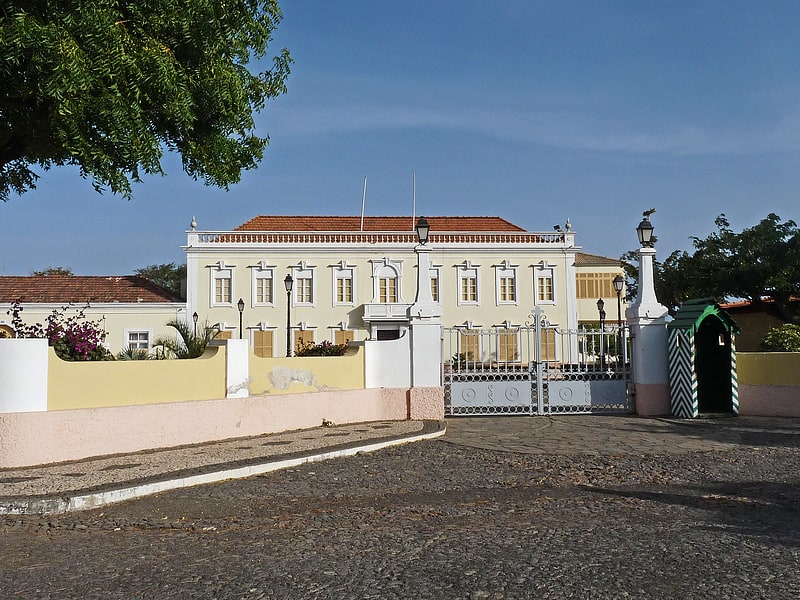
Neighbourhood in Praia, Cape Verde. Plateau is the historic centre of the capital city of Praia in the island of Santiago, Cape Verde. It gets its name because it is situated on a plateau overlooking the port of Praia. Its average elevation is 37 meters above sea level. The population of Plateau was 1,019 at the 2010 census. Many public buildings are situated in Plateau, notably the Presidential Palace, the cathedral, the city hall and the Ethnographic Museum.
Adjacent neighbourhoods are Gamboa/Chã de Areia to the south, Várzea to the southwest and west, Achadinha to the northwest, Fazenda to the north and Praia Negra to the east.[15]